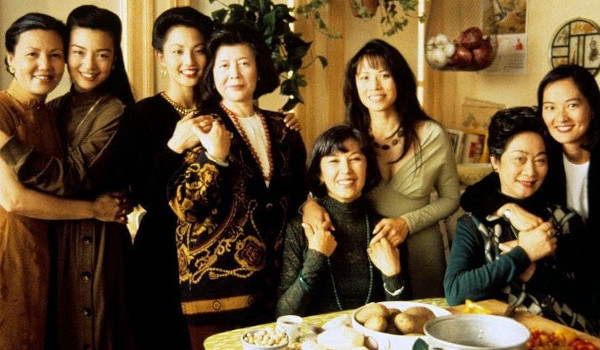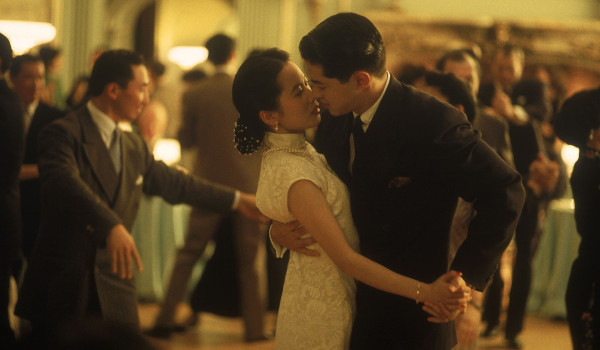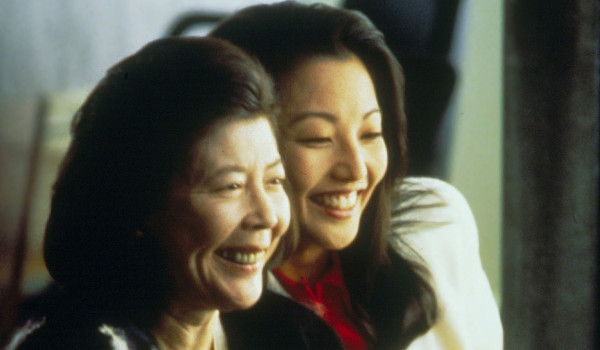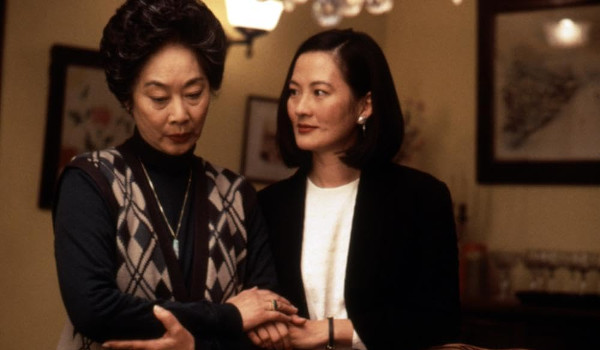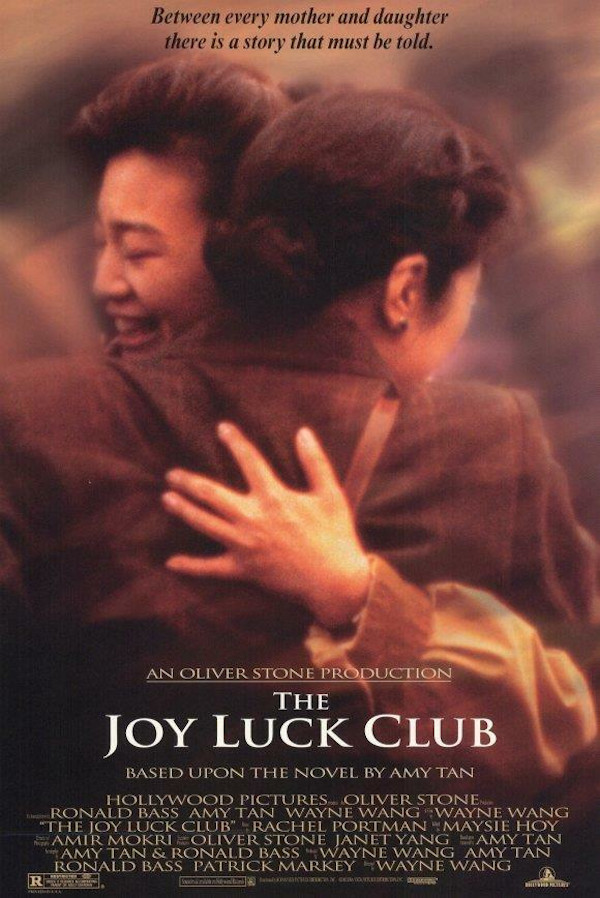- Title: The Joy Luck Club
- IMDb: link

“I tell you the story because I was raised the Chinese way. I was taught to desire nothing, to swallow other people’s misery, and to eat my own bitterness. And even though I taught my daughter the opposite, still she came out the same way. Maybe it is because she was born to me and she was born a girl, and I was born to my mother and I was born a girl, all of us like stairs, one step after another, going up, going down, but always going the same way.”
There are a handful of films that are guaranteed to always bring tears to my eyes. Based on the novel of the same name, 1993’s The Joy Luck Club centers around the lives of twenty-something Chinese-American women and the lives of their mothers, all of whom grew up in China, which are explored in flashbacks. After immigrating to America, these four women found each other and created the group playing mahjong and sharing stories for which the novel, and film, are named.
The film explores the relationships between mothers and daughters in both China and America. highlighting differences while also making parallels to each offering lessons to both mothers and daughters. The story of Ying-Ying (France Nuyen and Feihong Yu) focuses on the cruelty of her abusive marriage in China to Lin-Xiao (Russell Wong) leading to years of depression she passes on to her American daughter Lena (Lauren Tom) who struggles with her own relationship issues in a loveless marriage to a ridiculous man (Michael Paul Chan).
The life of Lindo (Tsai Chin and Irene Ng) explores her loveless arranged marriage in China which she eventually turned to her advantage. In her daughter Waverly (Tamlyn Tomita and Vu Mai) we see the struggle for understanding and connection between the pair first in her childhood rebellion over her mother’s boasting over her chess talent and later what Waverly views as her disapproval of her daughter’s choice in an American husband (Christopher Rich). Only in admitting her struggle to make her mother happy do the pair begin to find an understanding.
My favorite of stories involves An-Mei (Lisa Lu and Yi Ding) and her daughter Rose (Rosalind Chao). An-Mei’s complicated relationship to her mother (Vivian Wu) who was shunned by her family and forced to become a Fourth Wife to a rich man (Tian-Ming Wu) ties directly into Rose’s dissolving marriage to Ted (Andrew McCarthy) decades later. In Rose, An-Mei sees the mirror of her own mother not understanding her worth and in telling her daughter the story of her mother’s sacrifice she passes on a strength to Rose to find a voice to fight for what she wants.
The other story, which acts to tie the others together, involves June (Ming-Na Wen) and her recently deceased mother Suyuan (Kieu Chinh). Suyuan’s death brings the larger family together, with June taking her mother’s place within the mahjong club acting as the catalyst for these stories to be told as each of the other matriarchs begins to internally examine their own relationship with their daughters. In the flashbacks we’re shown Suyuan loosing twin baby daughters in China which plays in to June’s story decades later as she travels to meet her long-lost siblings in China providing the unfortunate news that their mother died before they could be reunited.
The script by Amy Tan (adapting her own novel) and Ron Bass expertly handles its impressive ensemble cast, varying character perspectives, and numerous flashbacks sequences to both the mothers’ lives in China and their daughters’ lives being raised in America. While some criticized the depiction of men in the film, they are not the focus of these stories (and, despite the criticism, there are positive examples such as Chao Li Chi as June’s father). Despite the film’s critical success (earning top ten recognition from the National Board of Review and both Gene Siskel and Roget Ebert) the film didn’t receive a single Oscar nomination.
It would be decades before another film focused primarily Asian-American experience would be produced by a major Hollywood studio. This is despite The Joy Luck Club‘s success earning back three-times its cost and out-performing films like The Age of Innocence, The Remains of the Day, The Sandlot, Hard Target, and earning more than twice as much as the likes of Jason Goes to Hell and True Romance.
Because of this, the film exists in a bit of a vacuum, standing out even more than the films of its era who were able to take home more awards or a higher percentage of the box office. Looking at the (incredibly white) list of Oscar winners for 1994, none of the films (with the possible exception of Jurassic Park which won only technical awards) have I returned to as often as The Joy Luck Club. In that year, only Schindler’s List succeeded in providing a cultural touchpoint that would rival that of The Joy Luck Club. In 2020 the film was selected by the National Film Registry for its cultural significance. And, after years of discussion and failed attempts, it appears a sequel may finally be on its way.
Watch the trailer